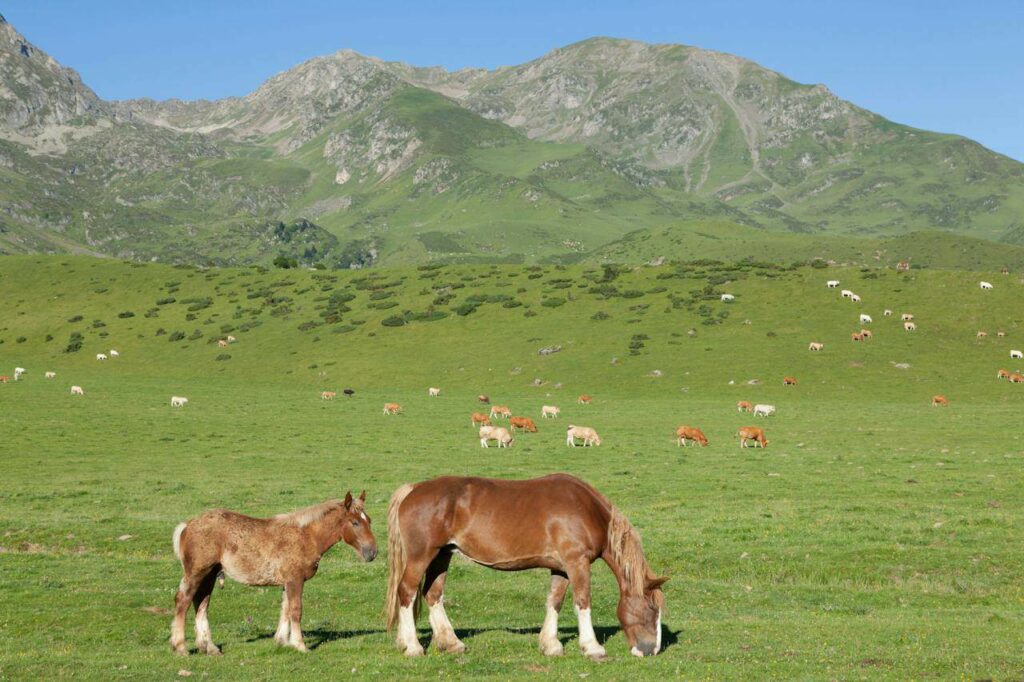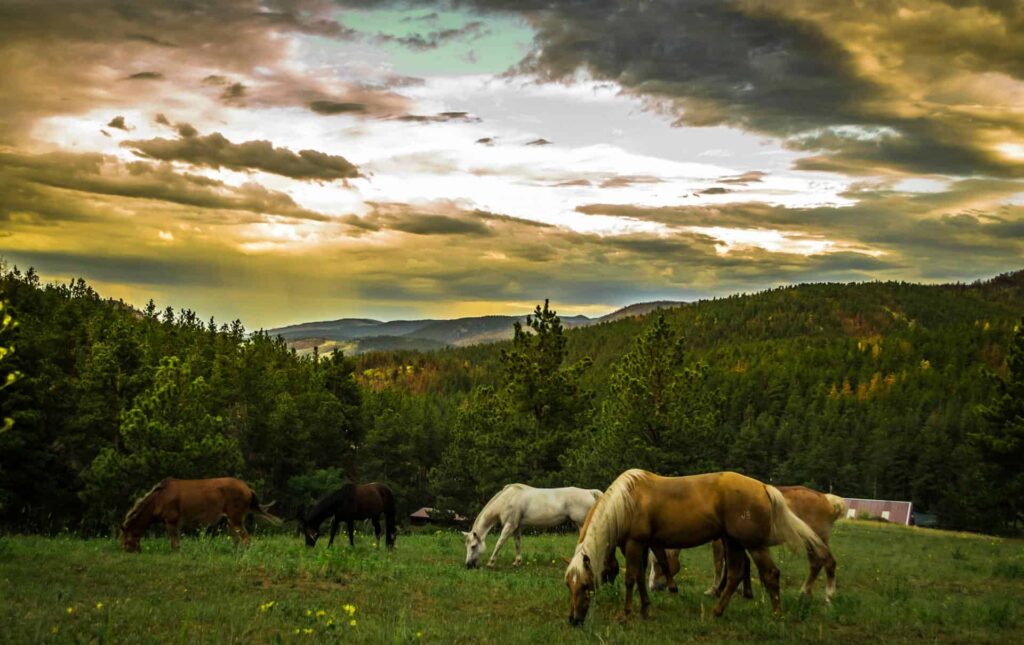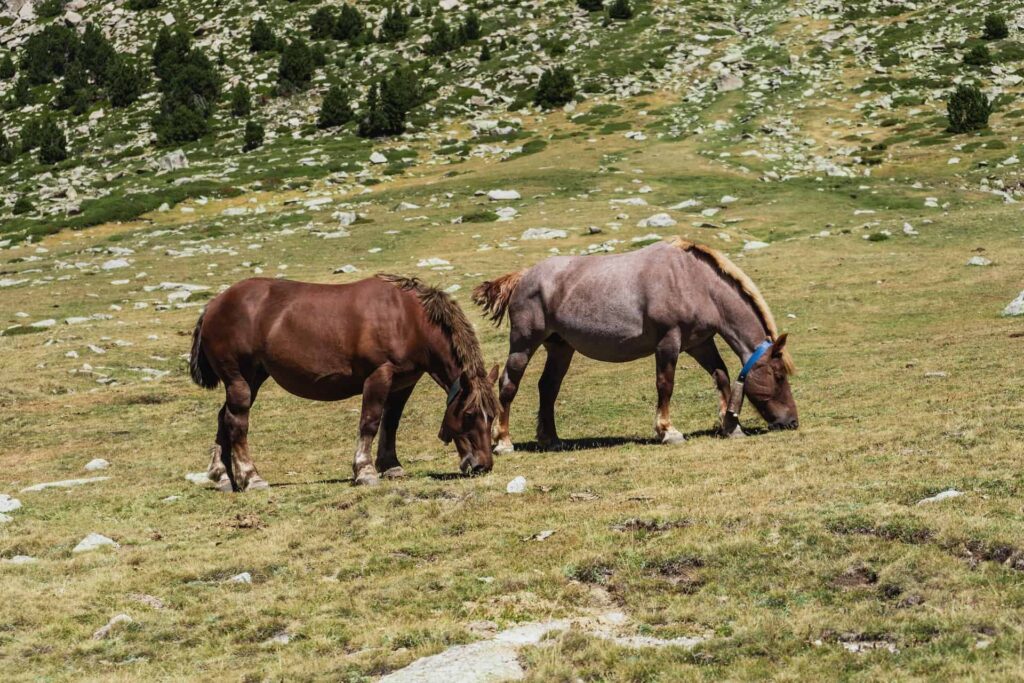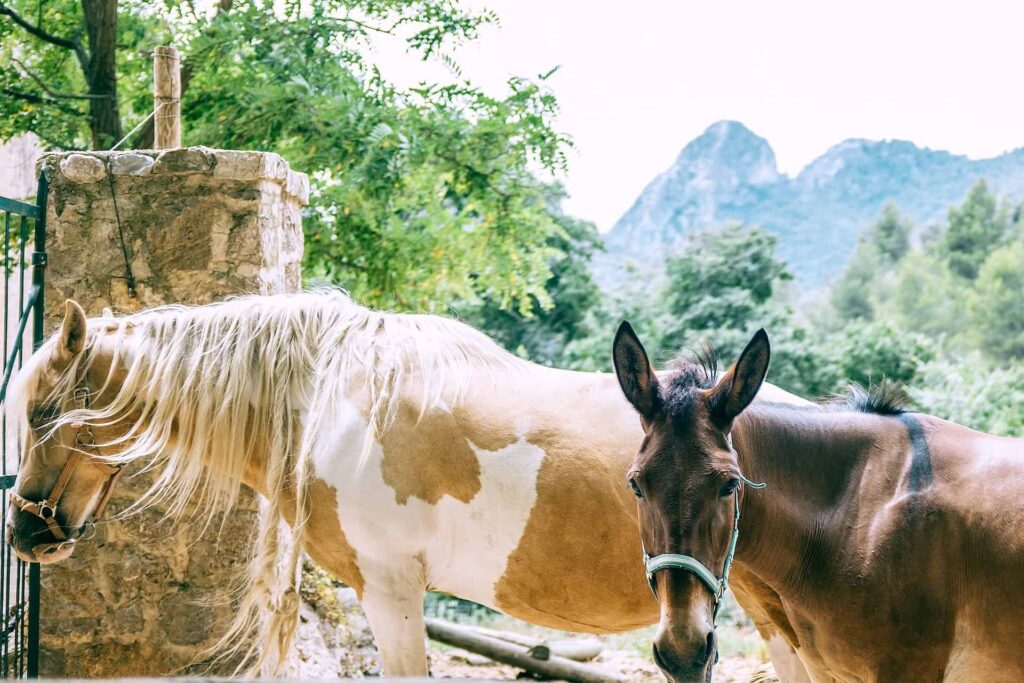Horse breeds vary significantly in terms of appearance, temperament, and abilities. This majestic animal has played a crucial role in the lives of humans for centuries, and as such, a myriad of breeds have been developed to suit specific needs and purposes. It may seem overwhelming to grasp the exact number of how many breeds of horses there are. Researchers and equestrian experts have made considerable progress in documenting and understanding the vast diversity of these impressive animals. Current research estimates that there are over 350 different breeds of horses currently in 2023.
Identification and categorization of horse breeds are primarily based on factors such as size, temperament, purpose, and unique physical attributes. This classification system enables enthusiasts and experts alike to better understand the fascinating world of equine breeds. While some breeds have gained widespread popularity, others still remain relatively uncommon or have distinct traits that make them stand out among the rest.
Key Takeaways
- Horse breeds exhibit considerable diversity in their appearance, temperament, and abilities.
- Classification of horse breeds primarily focuses on size, temperament, purpose, and unique physical attributes.
- Both widespread and uncommon horse breeds contribute to the rich tapestry of the equine world.
The Origin of Horse Breeds
The history of horse breeds begins with the domestication of wild horses, which occurred around 4,000 – 3,500 BC. Horses have been used for various purposes, including transportation, agriculture, and battle. Over time, selective breeding has led to the development of numerous diverse horse breeds around the world.
One such ancient breed is the Abyssinian, believed to have originated in Ethiopia. Abyssinian horses have a long, prominent history in the region and were often used for warfare and racing. Their agility and endurance made them a valuable asset in battle.
The American Cream Draft is another notable horse breed, developed in the United States during the early 20th century. This rare breed is known for its cream-colored coat and well-muscled, powerful build. As heavy draft horses, they were primarily bred for farming and other agricultural work.
Originating from North Africa, the Barb horse is a breed that played a significant role in the development of other renowned breeds, such as the Thoroughbred and Arabian. The Barb horse has a long history of use in military combat, prized for its stamina and agility in battle.
Belgian Draught horses, also known as the Brabant, are yet another unique breed, originating from the region of modern-day Belgium. They are known for their impressive size, strength, and gentle temperament, making them ideal for agricultural and hauling work. The Belgian Warmblood, on the other hand, is a distinct breed derived from the Belgian Draught and other European bloodlines. This breed was developed in the mid-20th century, primarily for equestrian sports such as show jumping and dressage.
The rich history and diversity of horse breeds are a testament to human ingenuity and the varied roles that these majestic animals have played throughout history. From the grace of the Abyssinian to the strength of the Belgian Draught, each breed has its unique origin and purpose, reflecting the needs and desires of those who bred them.

Defining the Breed
In the world of horses, there is a multitude of breeds with distinct characteristics and qualities. A breed is defined as a group of horses that possess specific, consistent features that are heritable through generations. Breed registries play a crucial role in maintaining the purity and lineage of each breed.
One of the many factors that differentiate breeds is their type or use. Horses can be classified into three major types: sport horses, ponies, and heavy horses. Sport horses are typically known for speed, agility, and grace, making them ideal for racing, show jumping, and dressage. Ponies, on the other hand, are smaller and sturdier, providing versatility and endurance in various equestrian disciplines. Heavy horses, known for their strength and size, are primarily used for draft work, agriculture, and as show horses.
Breeding is the process by which desirable traits are enhanced within a particular breed, and involves choosing both the sire (male) and dam (female) to ensure optimal genetic combinations. Professional breeders often have specific goals in mind, such as improving certain physical attributes, and performance abilities, or simply preserving the traits that make a breed unique. Some common factors that breeders consider are:
- Conformation: The horse’s physical structure, directly influences its ability to perform well in its intended discipline.
- Temperament: A horse’s nature and personality, potentially affecting suitability for certain equestrian disciplines.
- Genetic Health: Ensuring the offspring are free from common hereditary issues impacting the breed.
Selective breeding relies on understanding the lineage and genetics of both the sire and dam, which is where breed registries play a valuable role. These registries maintain records of lineage, ancestry, and other information that aids breeders in making informed decisions for the betterment of each breed.
Defining a horse breed involves recognizing a consistent set of characteristics and traits, which is often facilitated by breed registries. Different types of horses serve specific purposes, and breeding practices are employed to enhance and maintain these qualities to ensure a better, healthier future for each breed.
Overview of Horse breeds
There are numerous horse breeds in the world, each with distinct characteristics and purposes. Some breeds are known for their speed and athleticism, while others are valued for their strength and endurance. It is estimated that there are around 400 horse breeds worldwide.
Horse breeds can be categorized into three main types: Hot bloods, Cold bloods, and warm bloods. Hot-blooded horses, such as the renowned Arabian, are known for their agility, speed, and spirited nature. Cold-blooded horses, commonly called draft horses, are characterized by their strength and calm temperament. Breeds like the Belgian or Percheron excel in tasks requiring heavy pulling or carrying. Warmbloods are a category of horses created by breeding Hot bloods and Cold bloods, often resulting in athletic horses suitable for various equestrian sports such as dressage and show jumping. Examples of Warmblood breeds include the Holsteiner and Dutch Warmblood.
Within these types, there are specific breeds known for their unique qualities and skills. For instance, the Thoroughbred is a popular horse breed famous for its incredible speed and suited for racing, whereas the Appaloosa is widely recognized by its unique spotted coat pattern and versatility in various disciplines such as ranch work, trail riding, and Western events. The Andalusian, or the “Pure Spanish Horse,” has a distinctive long, flowing mane and tail and is admired for its grace and power in dressage.
In recent years, there has been an increased interest in genetic research on horse breeds, which has led to a better understanding of their lineages and traits. This research continues to enrich our knowledge of horses and contributes to preserving and promoting the diversity of horse breeds for future generations.
Classification Based on Size
Horses are primarily classified into various breeds based on their size, which is measured in a unit called “hands,” where one hand equals four inches. The height of a horse is typically measured from the ground to the withers (the highest point of the horse’s shoulders).
There are two broad categories based on size: ponies and horses. Ponies are usually smaller in stature, with a height less than 14.2 hands (58 inches). These smaller breeds possess a variety of characteristics, such as agility, strength, and endurance, which often make them suitable for various equestrian disciplines.
Some popular pony breeds include the Welsh Pony, known for its versatility and athleticism; and the Miniature Horse, which stands at a height of less than 34 inches and is primarily used for therapy and companionship. These pony breeds are highly sought after for their ability to excel in various equine activities, such as jumping, dressage, and driving.
On the other hand, larger horse breeds, often known as draft or heavy horses, are renowned for their immense size, strength, and ability to carry heavy loads. These breeds typically stand at heights ranging from 16 to over 20 hands (64 to 80+ inches). Some of the most well-known draft horses include the Shire, which is considered the largest horse breed in the world, and the Clydesdale, which originated in Scotland and is famous for its use in agriculture and pulling heavy carts.
The Shire Horse, for instance, can grow up to 20 hands (80 inches) in height and weighs around 2,200 pounds. This breed is primarily found in North America and Europe and is known for its calm demeanor and impressive pulling ability. The Clydesdale, on the other hand, stands at an average height of 18 hands (72 inches) and weighs approximately 1,800 to 2,000 pounds. Despite their large size, Clydesdales are also admired for their agility and grace.
When classifying horse breeds based on size, it’s important to consider the height, measured in hands, and the overall characteristics of each breed. Both pony and draft horse breeds have their unique attributes and abilities, making them suitable for various tasks and disciplines in the equestrian world.
Classification Based on Temperament
When considering horse breeds, it’s important to understand that temperament plays a crucial role in determining the suitability of a particular breed for various equestrian activities and disciplines. Let’s talk about how some popular horse breeds differ in temperament.
The Arabian horse is known for its intelligence, sensitivity, and strong bond with humans. These traits make the Arabian a versatile breed capable of excelling in various disciplines, from endurance riding to dressage. The energetic and spirited nature of Arabians can be challenging for novice riders, but with proper training and handling, they can be a rewarding companion.
The American Quarter Horse is another breed that is well-known for its mild temperament. These horses are often considered “easy keepers” due to their adaptable nature and willingness to please their riders. They’re typically calm, steady, and reliable, making them an excellent choice for both beginners and experienced riders alike. Quarter Horses are predominantly used in Western disciplines, such as rodeo and reining, but can also excel in English disciplines.
Andalusian horses originate from Spain and are known for their graceful movements and gentle demeanor. Their even-tempered and trainable nature makes them apt for dressage and various high school riding disciplines. Andalusians possess a kind and willing attitude, making them a popular choice amongst dressage enthusiasts.
The Akhal-Teke is a rare breed hailing from Turkmenistan, known for its endurance and athleticism. These horses are generally calm, responsive, and intelligent, making them suitable for eventing as well as endurance racing. Their independent nature may require an experienced rider to harness their potential fully.
Haflinger horses are a small and sturdy breed originating from Austria. Haflingers are distinguished by their friendly and easy-going temperaments. They are well-suited for a variety of disciplines, such as dressage, jumping, and trail riding, making them an ideal choice for amateur and family-oriented riders.
The Appaloosa breed is known for its distinct spotted coat pattern and versatile nature. Appaloosas have a reputation for being strong, hardy, and sure-footed horses, making them suitable for different equestrian pursuits like trail riding, western disciplines, and even dressage. Their temperament is often described as sensible and agile, which appeals to riders of varying skill levels.
Palomino is not a breed; it refers to a unique golden coat color that can be found in various horse breeds, including the American Quarter Horse and the Arabian. The temperament of Palomino horses depends on the breed they belong to; however, their striking appearance and versatility make them a popular choice amongst equestrian enthusiasts.
In summary, the temperaments of different horse breeds vary significantly, and each has unique characteristics that cater to specific riding disciplines and riders’ needs. When choosing a horse, consider their temperament alongside factors such as size and conformation to select a horse that is well-suited for the intended purpose.
Classification Based on Gait
There are numerous breeds of horses, and one way to classify them is by analyzing their gait, and the pattern of movement of their limbs during locomotion. Certain breeds, known as gaited horses, possess distinctive gaits owing to their unique genetic makeup.
A few well-known gaited horse breeds include the Morgan, Mustang, Standardbred, Missouri Fox Trotter, Kentucky Mountain Saddle Horse, and Hackney Horse. Each of these breeds demonstrates a specific gait that sets them apart from non-gaited horse breeds.
Morgan horses are renowned for their smooth, ground-covering gaits, which include the walk, trot, canter, and a unique four-beat ambling gait. They are versatile and adaptable, equally adept at riding, driving, and working.
Mustang horses, descendants of Spanish horses brought to America by conquistadors, possess a range of gaits, including the pace, trot, and canter. Their endurance and ability to cover vast distances make them a popular choice among competitive trail riders.
Standardbred horses are best known for their contributions to the world of harness racing. These athletic horses excel in the trot and pace, two lateral gaits marked by perfect diagonal movement and lateral movement, respectively.
The Missouri Fox Trotter is a unique gaited breed that showcases a signature gait called the foxtrot, a rhythmic and diagonal amble that offers a remarkably smooth ride. Distinguished by their steadiness and grace, these horses are favorites for trail riding and various equestrian pursuits.
Originating in the Appalachian Mountains, the Kentucky Mountain Saddle Horse is celebrated for its easy, four-beat gait, termed the saddle rack. This smooth gait minimizes the impact on the rider, enabling comfortable and long-distance riding.
Finally, the Hackney Horse is a breed prized for its high-stepping gaits, particularly the animated trot. This refined gait, marked by prominent knee and hock action, makes the Hackney Horse an excellent choice for carriage driving and competitive riding disciplines.
While there are numerous horse breeds, classifying them based on their distinctive gaits allows for a better understanding and appreciation of their unique qualities and capabilities. Understanding and respecting these differences when selecting the ideal horse for any specific purpose or discipline.
Classification Based on Purpose
When it comes to horse breeds, several primary classifications are based on their intended purposes. These purposes can include riding, farm work, sports participation, or even meat production.
In the world of riding horses, they can be further divided into saddle and trail riding breeds. Notable saddle breeds, known for their smooth gait and comfortable ride, include the American Saddlebred and the Dutch Warmblood. On the other hand, some popular breeds for trail riding, valued for their stamina and sure-footedness, consist of the Friesian and the Trakehner.
Draft horses are another classification that primarily focuses on farm work, agriculture, and harness activities. These horses are known for their strength, size, and ability to pull heavy loads. Some famous breeds of draft horses include the Clydesdale and the Percheron.
For those involved in equestrian sports, the sport horse category presents several breeds that excel in activities such as dressage, show jumping, and eventing. Warmblood breeds, like the Holsteiner and the Dutch Warmblood, significantly contribute to this category due to their powerful build, agility, and grace.
Apart from the various breeds serving specific human needs, some breeds are unfortunately associated with meat production. These horses, often referred to as meat breeds, are bred and raised primarily for human consumption.
Horse breeds are not only classified according to their physical attributes but also by their purpose and function. From riding and horse sports activities to farm work and even meat production, these animals have diverse roles within human society. Such a classification system allows riders, farmers, and equestrian sports enthusiasts to choose the appropriate breed that suits their needs and preferences best.

Unique Color Breeds
Horse breeds come in various colors and patterns, which serve as distinctive characteristics for each breed. Some breeds are particularly recognized for their unique colorings. Here are a few of these color breeds, such as Pinto, Oldenburg, American Paint Horse, Falabella, Buckskin, and Black Forest, and the colors that set them apart.
The Pinto horse breed is known for its flashy coat patterns, consisting of large patches of white mixed with another base color, such as black, chestnut, or bay. Pinto horses can be found in various breeds and types, adding a unique element of beauty to their appearance.
Oldenburg horses, originating from Germany, are often known for their elegant appearance and prevalence in various solid colors, including black, bay, and chestnut. They may also possess unique markings, such as socks, stockings, and blazes on their heads.
The American Paint Horse is another breed with a distinct color pattern, characterized by a combination of white and another color, usually black, bay, or chestnut. These horses display a variety of patterns, such as overo, tobiano, and sabino, and are known for their athleticism and versatility in various disciplines.
Falabella, one of the smallest horse breeds in the world, originated in Argentina. They are available in a wide array of colors, such as bay, black, chestnut, and various dilute colors. Their small size and diverse color range make them a unique and attractive breed.
Buckskin horses have a golden coat color with black points, including mane, tail, and lower legs. The color is caused by the cream dilution gene acting on a bay base color, giving the breed a striking, eye-catching appearance.
The Black Forest horse breed originates from Germany and is known for its unique chestnut color with a luscious, flaxen mane and tail, creating a stunning contrast. This breed is relatively rare and is highly valued for its beauty, versatility, and temperament.
These unique horse colors offer enthusiasts a wide range of beautiful and distinctive options to choose from. Each breed exhibits its own set of colors and markings, contributing to the diversity and appeal of the equine world.
Uncommon Horse Breeds
The world of horses is vast and diverse, with many breeds boasting unique characteristics and abilities. Among them, some lesser-known breeds stand out for their distinct attributes. One example is the Percheron, a French draft horse often recognized for its large build and muscular frame. Despite its size, this breed exhibits impressive stamina and is known for its exceptional work ethic.
Light horses, such as the Westphalian, are another category of uncommon breeds. Originating from Germany, the Westphalian is a versatile breed known for its athletic ability and suitability for various riding disciplines. It is characterized by a strong, compact build and a flowing, long mane.
Taking proper care of these uncommon breeds is crucial, as each has individualized needs based on their unique traits. For instance, Percherons may require specialized grooming to maintain their luxurious, thick manes, while Westphalians may need regular exercise and stimulation to keep their minds engaged and bodies in optimal condition.
While wild horses are not technically breeds, they are a vital part of the equine world and offer opportunities for exploration and study. For instance, the Pryor Mountain Wild Horses in the United States showcase their own set of unique characteristics shaped by generations of survival in rugged terrain. These horses exhibit impressive stamina, hardiness, and an unbreakable spirit.
The world of uncommon horse breeds is fascinating and diverse, offering insights into the remarkable range of adaptability and variation that exists within the equine species. From powerful draft horses to agile light horses, these unique breeds exemplify the many ways horses have been shaped by their environments, human intervention, and their own innate drive to thrive.
Special Attributes
Horses possess a diverse range of qualities that make them suitable for various tasks and purposes. Among their characteristics are speed, athletic abilities, and emotional connections with humans, which have been evolving for centuries. Numerous domestic horse breeds are available, each offering unique attributes.
Speed is a factor in horse breeds selected for racing and competitive sports. Thoroughbreds are recognized for their outstanding performance in this area, being the breed of choice for horse racing events.
Tail and overall appearance contribute to specific horse breeds’ popularity in the equestrian world. The flowing mane and tail of the Arabian breed, for example, are highly prized features that contribute to their value and appeal.
Beginner riders will appreciate a calm and patient horse breed, often seeking a breed known for its ease of handling. In this regard, Quarter Horses and Haflingers are known for their gentle nature, making them excellent companions for children and novice riders.
Centuries of human interaction have led to many horse breeds being bred for specific tasks. Breeds like the Andalusian and Lusitano, known for their elegant movements and athletic prowess, were developed for dressage and other skilled riding disciplines.
Children who engage in horse-related sports or activities ideally need a smaller and more docile breed. Welsh Ponies and Shetland Ponies are popular choices in these situations, providing the perfect balance of size and temperament.
Athletic capabilities are crucial for many horse breeds, and their skills often extend beyond merely racing. The American Quarter Horse is a versatile breed known for its agility and performance in a variety of events, including cutting, reining, and barrel racing.
Ehorses, an online platform for horse enthusiasts, highlights popular horse breeds like the Friesian and the Gypsy Vanner for their impressive appearance, friendly demeanor, and versatility.
There is a multitude of domestic horse breeds with various special attributes suitable for different tasks and needs. Whether looking for speed, appearance, athletic skills, or a suitable companion for a beginner rider or a child, there is a breed out there that caters to specific requirements.
Frequently Asked Questions
What are the most common horse breeds?
The most common horse breeds include the Arabian, Thoroughbred, Quarter Horse, and Appaloosa. The Arabian is known for its stamina and endurance, while the Thoroughbred is known for its speed and racing abilities. The Quarter Horse is popular for its versatility and performance in various equestrian sports, and the Appaloosa is recognized for its unique spotted coat patterns.
How many horse breeds are there in the world?
There are over 350 recognized horse breeds worldwide, with each breed showcasing unique characteristics, abilities, and appearances. This diverse range of breeds caters to the various needs and preferences of horse owners and riders.
What are the main types of horses?
Horses can be classified into three main types: hot-bloods, cold-bloods, and warm-bloods. Hot-blooded horses, such as Arabians and Thoroughbreds, are known for their speed and agility. Cold-blooded horses, like the Clydesdale and Shire, are heavy and strong, making them suitable for work and draft tasks. Warm-blooded horses, which include many European sport horses, are a mix of hot and cold-blooded characteristics, making them versatile and adaptable to various disciplines.
Which horse breeds are considered rare?
Some rare horse breeds include the Akhal-Teke, the Caspian horse, and the American Cream Draft. The Akhal-Teke is an ancient breed from Turkmenistan known for its unique metallic sheen, while the Caspian horse is a small, highly adaptable breed originating from Iran. The American Cream Draft, with its striking cream-colored coat, is the only draft breed developed in the United States.
How many domestic horse breeds exist?
There are over 350 domestic horse breeds worldwide, reflecting the various uses and roles horses have played in human societies. These breeds include racing, working, and sport horses, as well as those kept for pleasure and companionship.
How many wild horse breeds can be found?
While there are several populations of free-roaming horses around the world, such as the American Mustang and the Australian Brumby, true wild horse breeds are limited. Currently, Przewalski’s horse is the only true wild horse breed, with a small population living in Mongolia and reintroduction efforts taking place in various protected areas.
Last Updated on November 21, 2023 by Nate Dewsbury



